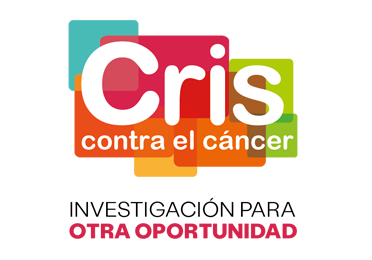• The PIM1 proto-oncogene evidenced as new therapeutic target through which to sensitize triple-negative breast tumours to chemotherapy
• PIM1 inhibitor-chemotherapy combo potentiates treatment and shrinks tumor size by 30%
VHIO´s Experimental Therapeutics Group, headed by Violeta Serra, has participated in an important study describing the molecular machinery that renders triple-negative breast cancer resistant to conventional chemotherapy.
This research, recently published in Nature Medicine*, was directed by Andrew Tutt, King’s College London (UK), and carried out in collaboration with colleagues from the Memorial Sloan Kettering Cancer Center, New York (USA), and Violeta´s group – particularly renowned for its expertise in developing and utilizing PDX (patient derived tumor xenografts) cancer models.
Using cell models and PDX, Andrew Tutt´s group and study co-collaborators have shown PIM1 proto-oncogene inhibitors as novel contenders aimed at reversing resistance of triple-negative breast cancer to standard chemotherapies, which could ultimately open up a promising new therapeutic avenue for these patients.
Identifying new therapeutic targets in triple-negative breast cancer is particularly pressing since, unlike other breast cancers, they do not depend on HER2 or estrogen receptors for their growth. As a result, there is currently no therapy targeted against this breast cancer subtype, and patients ultimately develop resistance to conventional chemotherapies such as eribulin and paclitaxel.
PIM1 inhibitors are already being researched for the treatment of leukaemia and lymphomas and have been proven effective in inducing cell death, thus halting tumour growth. As an example of drug repurposing, the researchers decided to test these novel agents against triple-negative breast cancer. Violeta´s team sought to validate findings reported in cell lines in patient-derived xenograft mouse models that more faithfully recapitulate the characteristics and particularities of patient tumors, thus representing a more predictive and precise cancer model.
Unmasking the molecular mechanisms of PIM1
The researchers showed that triple-negative breast cancer has a higher PIM1 gene copy number than other breast cancer subtypes, and revealed the molecular mechanisms of PIM1 – implicated in both cell survival and proliferation.
“In triple-negative breast cancer cell lines increased copy numbers of PIM1 translates in elevated protein expression. Cells overexpressing PIM1 exhibit a growth advantage due to the control that PIM1 exerts on the c-Myc oncogene and its transcriptional targets. Similarly, PIM1 also controls the expression of other genes implicated in the early stages of tumour development, such as SHP2 and EPHA2,” observes Violeta, who led VHIO´s collaboration in the project alongside Albert Gris, Graduate Student in her lab.
Another malignant characteristic directly related to PIM1 levels in cells is increased protection against mechanisms of apoptosis. Thus, triple-negative cancer cells produce high levels of PIM1, spurring growth and rendering them more resistant to cell death and thus, more resistant to anti-cancer therapies.
Once Tutt´s team and study collaborators had established the modus operandi of PIM1 they took their research one step further by exploring the therapeutic potential of PIM kinase inhibitor AZD1208. They went on to show that, similar to what occurs when PIM1 expression is silenced by RNA interference, AZD1208 can inhibit triple-negative breast cancer growth.
“Most importantly, the AZD1208-eribulin combo sensitizes cells to chemotherapy-induced apoptosis. Since this PIM1 inhibitor has already been tested in patients with leukaemia and lymphomas in clinical studies, we now know that it is safe and well-tolerated. We could therefore reasonably expect an accelerated application of this agent as targeted therapy against this difficult-to-treat breast cancer subtype,” she concludes.
Collaborative studies of this calibre are reflective of the purely multidisciplinary and translational nature of research at VHIO. These important cross-border partnerships are critical in the collective quest to solve cancer sooner and are spurred through the many synergies that VHIO has both identified and established with other comprehensive cancer centres of excellence across the globe.
###
*PIM1 kinase regulates cell death, tumor growth and chemotherapy response in triple-negative breast cancer. Andrew N. Tutt, et al. Nat. Med. (2016) doi:10.1038/nm.4198











